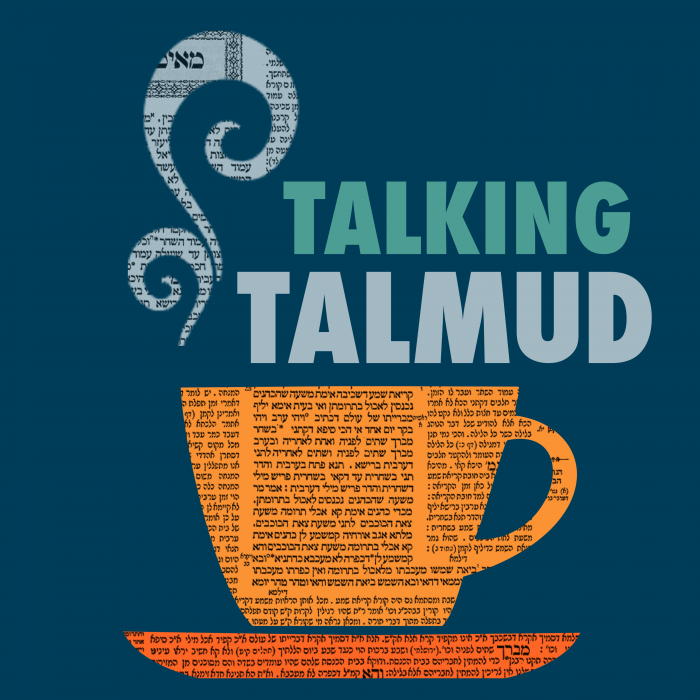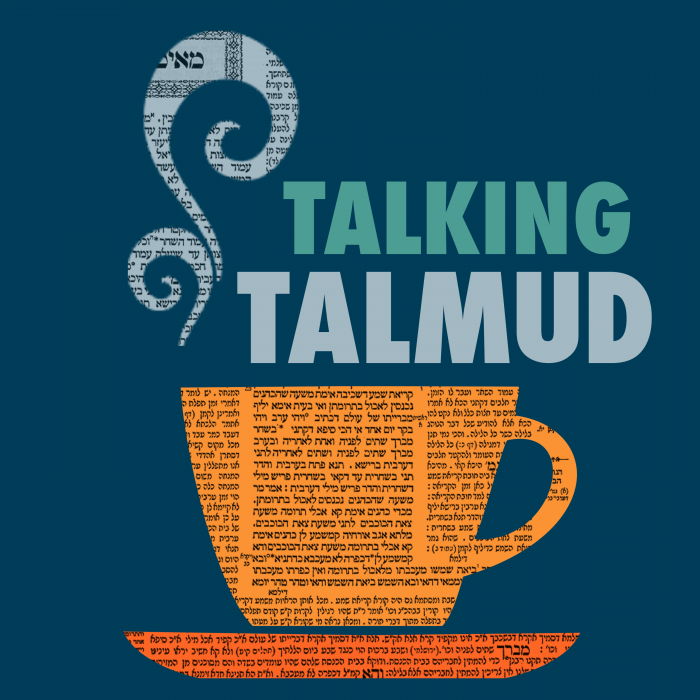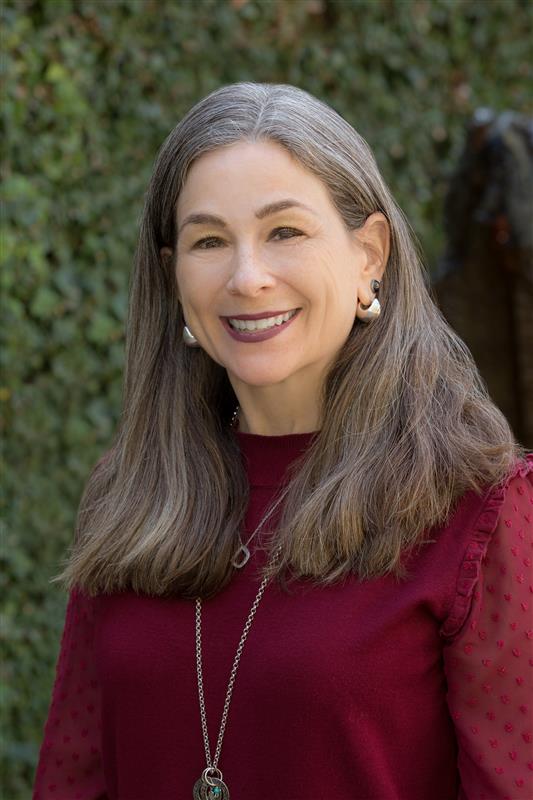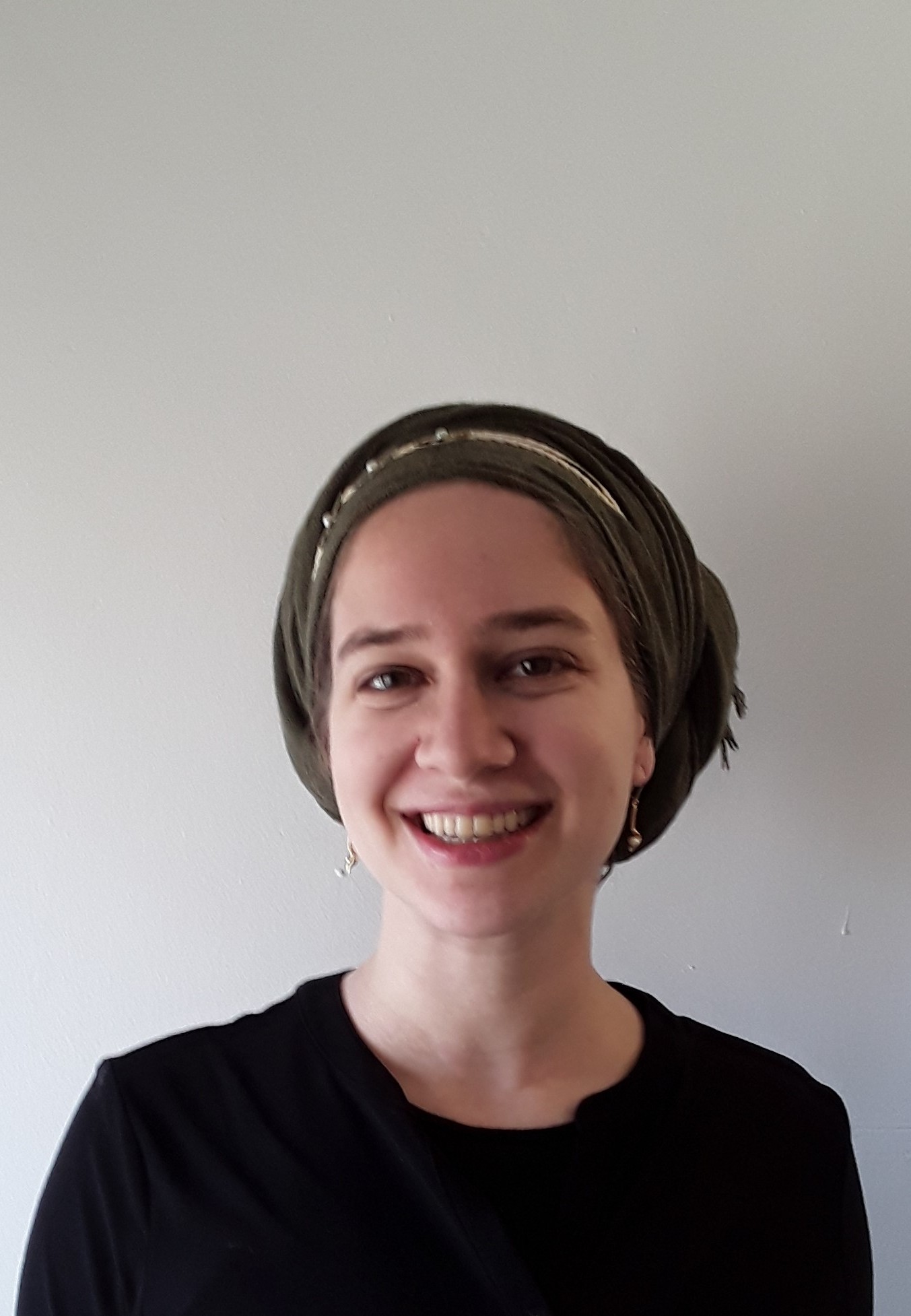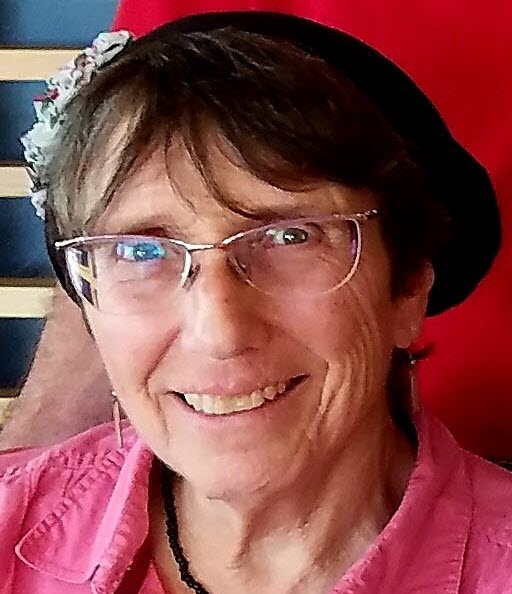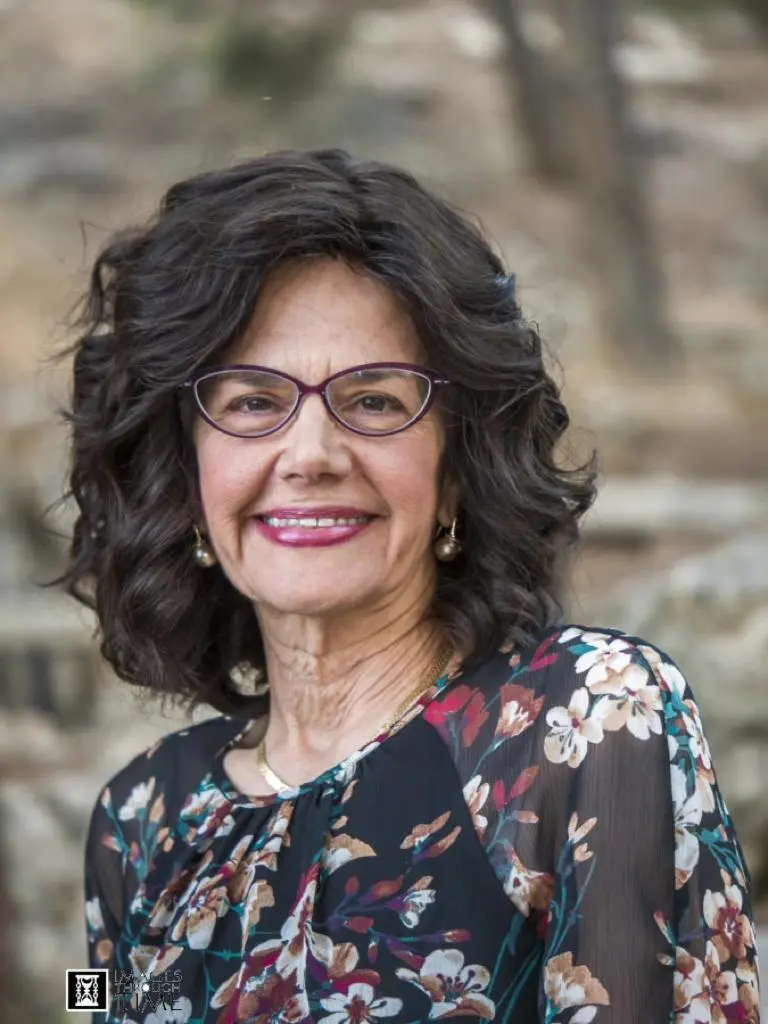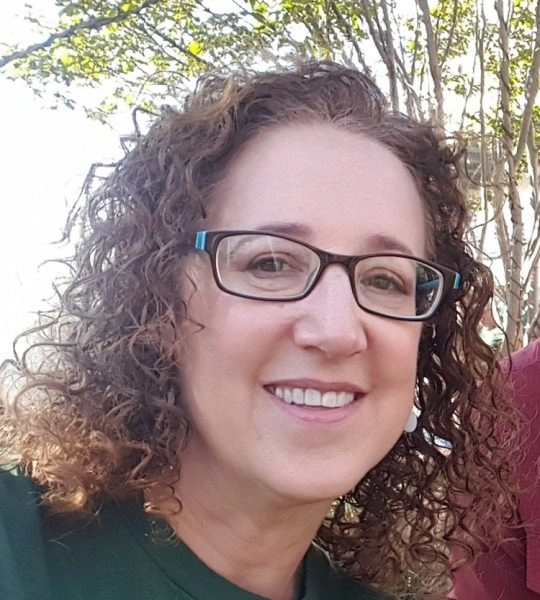Makkot 7
אִילְעָא וְטוֹבִיָּה, קָרִיבֵיהּ דְּעָרְבָא הֲוֹה. סְבַר רַב פָּפָּא לְמֵימַר: גַּבֵּי לֹוֶה וּמַלְוֶה רַחִיקִי נִינְהוּ. אֲמַר לֵיהּ רַב הוּנָא בְּרֵיהּ דְּרַב יְהוֹשֻׁעַ לְרַב פָּפָּא: אִי לֵית לֵיהּ לְלֹוֶה, לָאו בָּתַר עָרְבָא אָזֵיל מַלְוֶה?
Apropos disqualified witnesses, the Gemara relates: Two people called Ile’a and Tuviyya, who signed as witnesses on a promissory note, were relatives of the guarantor of the loan. Rav Pappa thought to say that since vis-à-vis the borrower and lender these witnesses are distant and are not related, their testimony on the document is valid. Rav Huna, son of Rav Yehoshua, said to Rav Pappa: If the borrower does not have the means to repay the loan, doesn’t the lender pursue the guarantor to claim his debt? Therefore, the guarantor is party to the loan, and his relatives are not eligible to serve as witnesses on the promissory note.
מַתְנִי׳ מִי שֶׁנִּגְמַר דִּינוֹ, וּבָרַח, וּבָא לִפְנֵי אוֹתוֹ בֵּית דִּין – אֵין סוֹתְרִין אֶת דִּינוֹ. כׇּל מָקוֹם שֶׁיַּעַמְדוּ שְׁנַיִם וְיֹאמְרוּ: ״מְעִידִים אָנוּ בְּאִישׁ פְּלוֹנִי שֶׁנִּגְמַר דִּינוֹ בְּבֵית דִּין שֶׁל פְּלוֹנִי, וּפְלוֹנִי וּפְלוֹנִי עֵדָיו״ – הֲרֵי זֶה יֵהָרֵג.
MISHNA: This mishna continues to discuss the matter of testimony in the case of one who is liable to be executed. Concerning one whose verdict was delivered and he was sentenced to death and he fled, and he then came before the same court that sentenced him, they do not overturn his verdict and retry him. Rather, the court administers the previous verdict. Consequently, in any place where two witnesses will stand and say: We testify with regard to a man called so-and-so that his verdict was delivered and he was sentenced to death in the court of so-and-so, and so-and-so and so-and-so were his witnesses, that person shall be executed on the basis of that testimony.
סַנְהֶדְרִין נוֹהֶגֶת בָּאָרֶץ וּבְחוּצָה לָאָרֶץ. סַנְהֶדְרִין הַהוֹרֶגֶת אֶחָד בְּשָׁבוּעַ נִקְרֵאת חוֹבְלָנִית. רַבִּי אֱלִיעֶזֶר בֶּן עֲזַרְיָה אוֹמֵר: אֶחָד לְשִׁבְעִים שָׁנָה. רַבִּי טַרְפוֹן וְרַבִּי עֲקִיבָא אוֹמְרִים: אִילּוּ הָיִינוּ בְּסַנְהֶדְרִין לֹא נֶהֱרַג אָדָם מֵעוֹלָם. רַבָּן שִׁמְעוֹן בֶּן גַּמְלִיאֵל אוֹמֵר: אַף הֵן מַרְבִּין שׁוֹפְכֵי דָּמִים בְּיִשְׂרָאֵל.
The mishna continues: The mitzva to establish a Sanhedrin with the authority to administer capital punishments is in effect both in Eretz Yisrael and outside Eretz Yisrael. A Sanhedrin that executes a transgressor once in seven years is characterized as a destructive tribunal. Since the Sanhedrin would subject the testimony to exacting scrutiny, it was extremely rare for a defendant to be executed. Rabbi Elazar ben Azarya says: This categorization applies to a Sanhedrin that executes a transgressor once in seventy years. Rabbi Tarfon and Rabbi Akiva say: If we had been members of the Sanhedrin, we would have conducted trials in a manner whereby no person would have ever been executed. Rabban Shimon ben Gamliel says: In adopting that approach, they too would increase the number of murderers among the Jewish people. The death penalty would lose its deterrent value, as all potential murderers would know that no one is ever executed.
גְּמָ׳ לִפְנֵי אוֹתוֹ בֵּית דִּין הוּא דְּאֵין סוֹתְרִין, הָא לִפְנֵי בֵּית דִּין אַחֵר – סוֹתְרִין. הָא תָּנֵי סֵיפָא: כׇּל מָקוֹם שֶׁיַּעַמְדוּ שְׁנַיִם וְיֹאמְרוּ: ״מְעִידִין אָנוּ אֶת אִישׁ פְּלוֹנִי שֶׁנִּגְמַר דִּינוֹ בְּבֵית דִּין פְּלוֹנִי, וּפְלוֹנִי וּפְלוֹנִי עֵדָיו״ – הֲרֵי זֶה נֶהֱרָג!
GEMARA: The Gemara infers: It is in the case of one who comes before the same court that they do not overturn the verdict, but if one comes before a different court they overturn the verdict and retry the case. The Gemara asks: Isn’t it taught in the latter clause of the mishna: Any place where two witnesses will stand and say: We testify with regard to a man called so-and-so that his verdict was delivered and he was sentenced to death in the court of so-and-so, and so-and-so and so-and-so were his witnesses, that person shall be executed on the basis of that testimony? This indicates that the verdict is not overturned and the defendant is not retried even before another court.
אָמַר אַבָּיֵי: לָא קַשְׁיָא, כָּאן בְּאֶרֶץ יִשְׂרָאֵל, כָּאן בְּחוּצָה לָאָרֶץ.
Abaye said: This apparent contradiction is not difficult, as here, in the first clause of the mishna, from which it was inferred that the second court overturns the initial verdict, it is referring to a case where the initial verdict was outside Eretz Yisrael and the defendant came before a court in Eretz Yisrael. There, in the latter clause, which indicates that the second court sustains the initial verdict and does not retry the defendant, it is referring to a case where the initial verdict was in Eretz Yisrael, and the case subsequently came before a court outside Eretz Yisrael.
דְּתַנְיָא: רַבִּי יְהוּדָה בֶּן דּוֹסְתַּאי אוֹמֵר מִשּׁוּם רַבִּי שִׁמְעוֹן בֶּן שָׁטַח: בָּרַח מֵאָרֶץ לְחוּצָה לָאָרֶץ – אֵין סוֹתְרִין אֶת דִּינוֹ. מֵחוּצָה לָאָרֶץ לָאָרֶץ – סוֹתְרִין אֶת דִּינוֹ, מִפְּנֵי זְכוּתָהּ שֶׁל אֶרֶץ יִשְׂרָאֵל.
This is as it is taught in a baraita, that Rabbi Yehuda ben Dostai says in the name of Rabbi Shimon ben Shataḥ: If a convicted defendant fled from Eretz Yisrael to outside Eretz Yisrael one does not overturn his verdict. Rather, they implement the initial verdict. But if one fled from outside Eretz Yisrael to Eretz Yisrael, one overturns his verdict and the defendant is retried. Perhaps, due to the merit of Eretz Yisrael, the court will discover a reason to exonerate him.
סַנְהֶדְרִין נוֹהֶגֶת כּוּ׳. מְנָא הָנֵי מִילֵּי? דְּתָנוּ רַבָּנַן: ״וְהָיוּ אֵלֶּה לָכֶם לְחֻקַּת מִשְׁפָּט לְדֹרֹתֵיכֶם״, לָמַדְנוּ לְסַנְהֶדְרִין שֶׁנּוֹהֶגֶת בָּאָרֶץ וּבְחוּצָה לָאָרֶץ.
§ The mishna teaches: The mitzva to establish a Sanhedrin with the authority to administer capital punishments is in effect both in Eretz Yisrael and outside Eretz Yisrael. The Gemara clarifies: From where are these matters derived? It is as the Sages taught: It is written with regard to the sentencing of murderers: “And these shall be for you as a statute of justice for your generations in all your dwelling places” (Numbers 35:29), from which we learn that the mitzva to establish a Sanhedrin is in effect both in Eretz Yisrael and outside Eretz Yisrael.
אִם כֵּן, מָה תַּלְמוּד לוֹמַר ״בִּשְׁעָרֶיךָ״? בִּשְׁעָרֶיךָ אַתָּה מוֹשִׁיב בָּתֵּי דִינִים בְּכׇל פֶּלֶךְ וָפֶלֶךְ וּבְכׇל עִיר וָעִיר, וּבְחוּצָה לָאָרֶץ אַתָּה מוֹשִׁיב בְּכׇל פֶּלֶךְ וָפֶלֶךְ, וְאִי אַתָּה מוֹשִׁיב בְּכׇל עִיר וָעִיר.
If so, what is the meaning when the verse states: “Judges and officers you shall appoint in all your gates” (Deuteronomy 16:18), which indicates that the mitzva to establish a Sanhedrin is in effect where the gates are yours, i.e., only in Eretz Yisrael? The explanation is as follows: In your gates, in Eretz Yisrael, you establish courts in each and every district and in each and every city, and outside Eretz Yisrael you establish courts in each and every district, but you do not establish courts in each and every city. The requirement to establish courts in every city is only in Eretz Yisrael.
סַנְהֶדְרִין הַהוֹרֶגֶת וְכוּ׳. אִיבַּעְיָא לְהוּ: אַחַת לְשִׁבְעִים שָׁנָה נִקְרֵאת חַבְּלָנִית, אוֹ דִלְמָא אוֹרַח אַרְעָא הִיא? תֵּיקוּ.
§ The mishna teaches: A Sanhedrin that executes once in seven years is characterized as a destructive tribunal. Rabbi Elazar ben Azarya says: This categorization applies to a Sanhedrin that executes once in seventy years. A dilemma was raised before the Sages: Is Rabbi Elazar ben Azarya saying that a Sanhedrin that executes once in seventy, rather than seven, years is characterized as a destructive tribunal? Or perhaps he is saying that standard conduct is for a Sanhedrin to execute once in seventy years, and only if it executes more than one person during that period is it characterized as destructive? The Gemara concludes: The dilemma shall stand unresolved.
רַבִּי טַרְפוֹן וְרַבִּי עֲקִיבָא אוֹמְרִים: אִילּוּ הָיִינוּ וְכוּ׳. הֵיכִי הֲווֹ עָבְדִי? רַבִּי יוֹחָנָן וְרַבִּי אֶלְעָזָר דְאָמְרִי תַּרְוַיְיהוּ: רְאִיתֶם טְרֵיפָה הָרַג, שָׁלֵם הָרַג?
The mishna teaches that Rabbi Tarfon and Rabbi Akiva say: If we had been members of the Sanhedrin, we would have conducted the trials in a manner where no person would have ever been executed. The Gemara asks: How would they have acted to spare the accused from execution if witnesses testified that he intentionally committed murder? Rabbi Yoḥanan and Rabbi Elazar both say that they would have asked the witnesses: Did you see whether the accused killed a tereifa, i.e., a person with a condition that would lead to his death within twelve months, or if he killed someone who was intact? The halakhic status of a tereifa is like that of one who is dead, in the sense that one who kills him is not executed. Since no witness can be certain with regard to the victim’s physical condition, they would invalidate any testimony to a murder.
אָמַר רַב אָשֵׁי: אִם תִּמְצָא לוֹמַר שָׁלֵם הֲוָה, דִּלְמָא בִּמְקוֹם סַיִיף נֶקֶב הֲוָה.
Rav Ashi said: Even if you say that they examined him postmortem and he was intact the testimony could be challenged, as perhaps in the place that the sword pierced the victim’s body there was a perforation in one of the organs that renders the person a tereifa, but which was rendered undetectable by the wound caused by the sword.
בְּבוֹעֵל אֶת הָעֶרְוָה הֵיכִי הֲווֹ עָבְדִי? אַבָּיֵי וְרָבָא דְּאָמְרִי תַּרְוַיְיהוּ: רְאִיתֶם כְּמִכְחוֹל בִּשְׁפוֹפֶרֶת? וְרַבָּנַן, הֵיכִי דָּיְינוּ? כִּשְׁמוּאֵל, דְּאָמַר שְׁמוּאֵל: בִּמְנָאֲפִים – מִשֶּׁיִּרְאוּ כִּמְנָאֲפִים.
The Gemara asks: With regard to one who engages in intercourse with a forbidden relative, how would they have acted to spare the accused from execution? Abaye and Rava both say that they would have asked the witnesses: Did you see the intercourse, like a brush entering into a tube? Since witnesses rarely witness the act that closely, one could claim that the testimony is incomplete. The Gemara asks: And concerning the Rabbis, who disagree with Rabbi Tarfon and Rabbi Akiva, how would they have adjudicated that case? The Gemara answers: They hold in accordance with the statement of Shmuel, as Shmuel says: In cases involving adulterers one can testify and convict them from when they will appear as adulterers, without any need for him to witness the act in graphic detail.
הֲדַרַן עֲלָךְ כֵּיצַד הָעֵדִים
מַתְנִי׳ אֵלּוּ הֵן הַגּוֹלִין: הַהוֹרֵג נֶפֶשׁ בִּשְׁגָגָה, הָיָה מְעַגֵּל בַּמַּעְגֵּילָה וְנָפְלָה עָלָיו וַהֲרָגַתּוּ, הָיָה מְשַׁלְשֵׁל בֶּחָבִית וְנָפְלָה עָלָיו וַהֲרָגַתּוּ, הָיָה יוֹרֵד בַּסּוּלָּם וְנָפַל עָלָיו (וַהֲרָגַתּוּ) [וַהֲרָגוֹ] – הֲרֵי זֶה גּוֹלֶה. אֲבָל אִם הָיָה מוֹשֵׁךְ בַּמַּעְגֵּילָה וְנָפְלָה עָלָיו וַהֲרָגַתּוּ, הָיָה דּוֹלֶה בֶּחָבִית וְנִפְסַק הַחֶבֶל וְנָפְלָה עָלָיו וַהֲרָגַתּוּ
MISHNA: These are the people who are exiled: Anyone who kills a person unintentionally. Whether one is liable to be exiled depends on the particular circumstances of the case: If one was rolling a roller to smooth the covering of mortar that he applied to seal his roof and the roller fell upon a person and killed him, or if one was lowering a barrel from the roof and it fell on a person and killed him, or if he was descending a ladder and he fell on a person and killed him, in all of these cases, he is exiled. But if one was pulling a roller toward him and it fell from his hands upon a person and killed him, or if one was lifting a barrel and the rope was severed and it fell upon a person and killed him,
הָיָה עוֹלֶה בַּסּוּלָּם וְנָפַל עָלָיו וַהֲרָגוֹ – הֲרֵי זֶה אֵינוֹ גּוֹלֶה. זֶה הַכְּלָל: כׇּל שֶׁבְּדֶרֶךְ יְרִידָתוֹ – גּוֹלֶה, וְשֶׁלֹּא בְּדֶרֶךְ יְרִידָתוֹ – אֵינוֹ גּוֹלֶה.
or if one was climbing a ladder and he fell upon a person and killed him, that unintentional murderer is not exiled. This is the principle: Any murderer who kills unintentionally through his downward motion is exiled, and one who kills not through his downward motion is not exiled.
גְּמָ׳ מְנָא הָנֵי מִילֵּי? דְּאָמַר שְׁמוּאֵל דְּאָמַר קְרָא: ״וַיַּפֵּל עָלָיו וַיָּמֹת״ – עַד שֶׁיִּפּוֹל דֶּרֶךְ נְפִילָה.
GEMARA: The Gemara asks with regard to the principle that one is exiled only if he killed unintentionally through a downward motion: From where are these matters derived? It is derived from a verse, as Shmuel says that the verse states with regard to those exiled to a city of refuge: “And he cast it down upon him and dies” (Numbers 35:23), indicating that one is not liable to be exiled unless the item falls in a downward motion.
תָּנוּ רַבָּנַן: ״בִּשְׁגָגָה״ – פְּרָט לְמֵזִיד. ״בִּבְלִי דַּעַת״ – פְּרָט לְמִתְכַּוֵּין.
The Sages taught in a baraita derivations from verses written with regard to the unintentional murderer: “Unintentionally” (Numbers 35:11); to exclude from exile the one who kills intentionally. “Unawares” (Deuteronomy 19:4); to exclude from exile the one who kills with intent.
מֵזִיד? פְּשִׁיטָא, בַּר קְטָלָא הוּא! אֶלָּא אָמַר רָבָא: אֵימָא פְּרָט לְאוֹמֵר מוּתָּר. אֲמַר לֵיהּ אַבָּיֵי: אִי אוֹמֵר מוּתָּר, אָנוּס הוּא? אֲמַר לֵיהּ: שֶׁאֲנִי אוֹמֵר, הָאוֹמֵר מוּתָּר – קָרוֹב לְמֵזִיד הוּא.
The Gemara asks: Why is a derivation necessary to exclude one who kills intentionally? It is obvious that he is not exiled; he is subject to the death penalty. Rather, Rava said: Say that the type of intentional killer referred to is meant to exclude the one who says that it is permitted to kill the victim. The verse teaches that this person is neither executed nor is he exiled. Abaye said to Rava: If the reference is to one who says that it is permitted, he is a victim of circumstances beyond his control, as he did not know any better. How could that be characterized as intentional? Rava said to him: That is not a problem, as I say that with regard to one who says that it is permitted, his action borders on the intentional.
״בִּבְלִי דַעַת״ – פְּרָט לְמִתְכַּוֵּין. מִתְכַּוֵּין? פְּשִׁיטָא, בַּר קְטָלָא הוּא! אָמַר רַבָּה: פְּרָט לְמִתְכַּוֵּין לַהֲרוֹג אֶת הַבְּהֵמָה וְהָרַג אֶת הָאָדָם, לַגּוֹי וְהָרַג אֶת יִשְׂרָאֵל, לַנֵּפֶל וְהָרַג בֶּן קַיָּימָא.
The baraita states: “Unawares”; to exclude from exile the one who kills with intent. The Gemara asks: With intent? It is obvious that he is not exiled; he is subject to the death penalty. Rabba said: The reference is to exclude the one who acted with the intent to kill an animal and he killed a person inadvertently, or one who acted with the intent to kill a gentile and he killed a Jew, or one who acted with the intent to kill a non-viable newborn and he killed a viable newborn.
תָּנוּ רַבָּנַן: ״אִם בְּפֶתַע״ – פְּרָט לְקֶרֶן זָוִית. ״בְּלֹא אֵיבָה״ – פְּרָט לְשׂוֹנֵא. ״הֲדָפוֹ״ – שֶׁדְּחָפוֹ בְּגוּפוֹ. ״אוֹ הִשְׁלִיךְ עָלָיו״ – לְהָבִיא יְרִידָה שֶׁהִיא צוֹרֶךְ עֲלִיָּה. ״בְּלֹא צְדִיָּה״ – פְּרָט לְמִתְכַּוֵּין לְצַד זֶה וְהָלְכָה לָהּ לְצַד אַחֵר.
The Sages taught in a baraita based on the verse written with regard to an unintentional murderer: “And if suddenly, without enmity, he thrust him or cast upon him any vessel without lying in wait” (Numbers 35:22). “If suddenly”; this serves to exclude one who unintentionally kills another that he encounters at a corner. “Without enmity”; this serves to exclude one who unintentionally kills his enemy, as even if the act appears unintentional, the presumption is that it was not. “He thrust him”; this indicates that even if he unintentionally shoved him with his body and killed him, he is liable to be exiled. “Or cast upon him”; this serves to include the case of a downward motion that is for the purpose of an upward motion, e.g., if one bent down in order to lift an item from the ground, and in the process of bending down he killed another unintentionally, he is exiled. “Without lying in wait”; this serves to exclude one who had the intent to throw a stone to this side and it went to a different side and killed a person.
״וַאֲשֶׁר לֹא צָדָה״ – פְּרָט לְמִתְכַּוֵּין לִזְרוֹק שְׁתַּיִם, וְזָרַק אַרְבַּע. ״וַאֲשֶׁר יָבֹא אֶת רֵעֵהוּ בַיַּעַר״ – מָה יַעַר רְשׁוּת לַנִּיזָּק וְלַמַּזִּיק לִיכָּנֵס לְשָׁם, אַף כֹּל רְשׁוּת לַנִּיזָּק וְלַמַּזִּיק לִיכָּנֵס לְשָׁם.
And it is written with regard to an unintentional murderer: “And who did not lie in wait” (Exodus 21:13); this serves to exclude one who had intent to throw a stone two cubits and he inadvertently threw it four cubits and killed a person. And it is written concerning an unintentional murderer: “And as one who goes with his neighbor into the forest” (Deuteronomy 19:5), from which it is derived: Just as a forest is ownerless property, and there is permission for the victim and for the assailant to enter there, so too, unintentional murder that occurs in any place where there is permission for the victim and for the assailant to enter there, is punishable with exile. The unintentional murder of one who entered the assailant’s property without his permission is not cause for the murderer to be exiled.
בְּעָא מִינֵּיהּ רַבִּי אֲבָהוּ מֵרַבִּי יוֹחָנָן: הָיָה עוֹלֶה בַּסּוּלָּם וְנִשְׁמְטָה שְׁלִיבָה מִתַּחְתָּיו, וְנָפְלָה וְהָרְגָה, מַהוּ? כִּי הַאי גַוְונָא עֲלִיָּה הִיא, אוֹ יְרִידָה הִיא? אֲמַר לֵיהּ: כְּבָר נָגַעְתָּ בִּירִידָה שֶׁהִיא צוֹרֶךְ עֲלִיָּה.
§ The Gemara cites a related discussion. Rabbi Abbahu raised a dilemma before Rabbi Yoḥanan: If one was ascending a ladder and the rung was displaced from beneath him, and the rung fell and killed another, what is the halakha with regard to his being exiled? In a case like this, is it considered killing in an upward motion, as he was climbing the ladder, and therefore he is exempt, or is it considered killing in a downward motion, as when he stepped on the rung he pushed it down, and therefore he is liable? Rabbi Yoḥanan said to him: In the scenario you described, you already touched upon the case in the baraita cited above, the case of unintentional murder that is performed with a downward motion that is for the purpose of an upward motion. The ruling in the baraita is that one is liable to be exiled in that case.
אֵיתִיבֵיהּ, זֶה הַכְּלָל: כׇּל שֶׁבְּדֶרֶךְ יְרִידָתוֹ – גּוֹלֶה, שֶׁלֹּא בְּדֶרֶךְ יְרִידָתוֹ – אֵינוֹ גּוֹלֶה. שֶׁלֹּא בְּדֶרֶךְ יְרִידָתוֹ לְאֵיתוֹיֵי מַאי? לָאו לְאֵיתוֹיֵי כְּהַאי גַוְונָא? וְלִיטַעְמָיךְ, כָּל שֶׁבְּדֶרֶךְ יְרִידָתוֹ, לְאֵיתוֹיֵי מַאי?
Rabbi Abbahu raised an objection to the explanation of Rabbi Yoḥanan from the mishna, which states: This is the principle: Any murderer who kills unintentionally through his downward motion is exiled, and one who kills not through his downward motion is not exiled. Rabbi Abbahu clarifies: With regard to the phrase in the mishna: One who kills not through his downward motion, what case that was not already specified does this serve to add? Is it not to add a case like this, and to teach that even though the death was caused by the falling rung, since the assailant was ascending the ladder at the time, he is not exiled? Rabbi Yoḥanan replied: And according to your reasoning that this apparently extraneous phrase serves to include a case that is not addressed explicitly, with regard to the previous phrase in the mishna: Any murderer who kills unintentionally through his downward motion, what case that was not already specified does this serve to add?
אֶלָּא לְאֵיתוֹיֵי קַצָּב, הָכָא נָמֵי לְאֵיתוֹיֵי קַצָּב. דְּתַנְיָא: קַצָּב שֶׁהָיָה מְקַצֵּב, תָּנָא חֲדָא: לְפָנָיו – חַיָּיב, לְאַחֲרָיו – פָּטוּר. וְתַנְיָא אִידַּךְ: לְאַחֲרָיו – חַיָּיב, לְפָנָיו – פָּטוּר. וְתַנְיָא אִידַּךְ: בֵּין לְפָנָיו בֵּין לְאַחֲרָיו – חַיָּיב, וְתַנְיָא אִידַּךְ: בֵּין לְפָנָיו בֵּין לְאַחֲרָיו – פָּטוּר. וְלָא קַשְׁיָא.
Rather, one may say that it serves to add the case of a butcher. Here too, in the latter clause, the phrase: One who kills not through his downward motion, serves to add the case of a butcher, as it is taught in a baraita: With regard to a butcher who was chopping animal limbs with a cleaver, one Sage taught that if he killed a person in front of him, he is liable to be exiled; if he killed a person behind him, he is exempt. And it is taught in another baraita: If he killed a person behind him, he is liable; if he killed a person in front of him, he is exempt. And it is taught in another baraita: Both if he killed a person in front of him and if he killed a person behind him, he is liable. And it is taught in another baraita: Both if he killed a person in front of him and if he killed a person behind him, he is exempt. And although these baraitot appear contradictory, the apparent contradiction is not difficult.
כָּאן – בִּירִידָה שֶׁלְּפָנָיו, וַעֲלִיָּה שֶׁלְּאַחֲרָיו. כָּאן – בַּעֲלִיָּה שֶׁלְּפָנָיו, וִירִידָה שֶׁלְּאַחֲרָיו.
When a butcher is about to cut the meat of an animal, he raises the cleaver and lowers it behind him in order to create momentum that will generate power. Then he raises the cleaver from behind him and brings it down forcefully onto the meat. In that process, the butcher lowers the cleaver in front of him and behind him and raises the cleaver both in front of him and behind him. Each of the four baraitot addresses a different stage of the process. Here, the baraita that says he is liable if he unintentionally murders a person in front of him and exempt if he unintentionally murders a person behind him, is referring to a case where the butcher swings the cleaver with a downward motion in front of him and an upward motion behind him. There, the baraita that says he is exempt if he unintentionally murders a person in front of him and liable if he unintentionally murders a person behind him, is referring to a case where the butcher swings the cleaver with an upward motion in front of him and a downward motion behind him.
כָּאן – בִּירִידָה שֶׁלְּפָנָיו וְשֶׁל אַחֲרָיו, כָּאן – בַּעֲלִיָּה שֶׁלְּפָנָיו וְשֶׁל אַחֲרָיו.
In addition, here, the baraita where he is liable in both instances, is referring to a case where the butcher swings the cleaver with a downward motion both in front of him and behind him. There, the baraita where he is exempt in both instances, is referring to a case where the butcher swings the cleaver with an upward motion both in front of him and behind him. The two phrases that constitute the principle in the mishna teach that the determining factor is whether the motion is upward or downward, not whether it is in front of him or behind him. This is Rabbi Yoḥanan’s reply to the objection of Rabbi Abbahu.
לֵימָא כְּתַנָּאֵי: הָיָה עוֹלֶה בַּסּוּלָּם וְנִשְׁמְטָה שְׁלִיבָה מִתַּחְתָּיו, תָּנֵי חֲדָא חַיָּיב, וְתַנְיָא אִידַּךְ פָּטוּר. מַאי לָאו בְּהָא קָא מִיפַּלְגִי, דְּמָר סָבַר יְרִידָה הִיא, וּמָר סָבַר עֲלִיָּה הִיא?
The Gemara suggests: Let us say that Rabbi Abbahu’s dilemma with regard to unintentional murder committed by one climbing a ladder is the subject of a dispute between tanna’im: If one was ascending a ladder and its rung was displaced from beneath him, it is taught in one baraita that he is liable, and it is taught in another baraita that he is exempt. What, is it not that the tanna’im disagree with regard to this, as one Sage holds: It is unintentional murder in a downward motion, and therefore he is liable, and one Sage holds: It is unintentional murder in an upward motion, and therefore he is exempt?
לָא, דְּכוּלֵּי עָלְמָא עֲלִיָּה הִיא. וְלָא קַשְׁיָא: כָּאן לִנְיזָקִין, כָּאן לְגָלוּת.
The Gemara rejects that parallel: No, that is not the point of contention, as everyone agrees that it is an upward motion, and there is no dispute between the Sages in the baraitot. Nevertheless, the apparent contradiction between them is not difficult, as here, in the baraita that rules him liable, the reference is to payment of damages, as with regard to one’s liability to pay damages, there is no difference between upward and downward motions, or between intentional and unwitting damage; and there, in the baraita that rules him exempt, the reference is to exile, from which one who murders unintentionally in an upward motion is exempt by Torah edict.
אִיבָּעֵית אֵימָא הָא וְהָא לְגָלוּת, וְלָא קַשְׁיָא, הָא דְּאַתְלַיע, הָא דְּלָא אַתְלַע.
If you wish, say instead that in both this baraita and that baraita the reference is to exile, and it is not difficult, as this baraita, where the ruling is that he is liable, is referring to a case where the rung of the ladder was worm infested and he should have been cautious before stepping on it, and that baraita, where the ruling is that he is exempt, is referring to a case where the rung was not worm infested, as in that case it is murder due to circumstances beyond his control, as he could not have anticipated that the rung would be displaced.
וְאִיבָּעֵית אֵימָא: הָא וְהָא דְּלָא אַתְלַע, וְלָא קַשְׁיָא, הָא דְּמִיהַדַּק, וְהָא דְּלָא מִיהַדַּק.
And if you wish, say that in both this baraita and that baraita the reference is to a rung that was not worm infested, and it is not difficult, as this baraita, where the ruling is that he is exempt, is referring to a case where the rung was tightly inserted into the ladder, and therefore he could not have foreseen that it would be displaced, and that baraita, where the ruling is that he is liable, is referring to a case where the rung was not tightly inserted and he should have anticipated its displacement.
מַתְנִי׳ נִשְׁמַט הַבַּרְזֶל מִקַּתּוֹ וְהָרַג, רַבִּי אוֹמֵר: אֵינוֹ גּוֹלֶה, וַחֲכָמִים אוֹמְרִים: גּוֹלֶה. מִן הָעֵץ הַמִּתְבַּקֵּעַ, רַבִּי אוֹמֵר: גּוֹלֶה, וַחֲכָמִים אוֹמְרִים: אֵינוֹ גּוֹלֶה.
MISHNA: If the blade of an ax or hatchet was displaced from its handle, and it flew through the air and killed a person, Rabbi Yehuda HaNasi says: He is not exiled, and the Rabbis say: He is exiled. If part of a tree that is being split flew through the air and killed a person, Rabbi Yehuda HaNasi says: The murderer is exiled, and the Rabbis say: He is not exiled.
גְּמָ׳ תַּנְיָא, אָמַר לָהֶם רַבִּי לַחֲכָמִים: וְכִי נֶאֱמַר ״וְנָשַׁל הַבַּרְזֶל מֵעֵצוֹ״? וַהֲלֹא לֹא נֶאֱמַר אֶלָּא ״מִן הָעֵץ״! וְעוֹד, נֶאֱמַר ״עֵץ״ לְמַטָּה וְנֶאֱמַר ״עֵץ״ לְמַעְלָה, מָה ״עֵץ״ הָאָמוּר לְמַעְלָה מִן הָעֵץ הַמִּתְבַּקֵּעַ, אַף ״עֵץ״ הָאָמוּר לְמַטָּה מִן הָעֵץ הַמִּתְבַּקֵּעַ.
GEMARA: It is taught in a baraita that Rabbi Yehuda HaNasi said to the Rabbis: Is it stated in the verse: And the blade displaces from its wood handle? But isn’t it stated: “And the blade displaces from the wood” (Deuteronomy 19:5), indicating that it is a wood chip from the tree that causes the death of the person? And furthermore: Etz is stated below: “And the blade displaces from the etz,” and etz is stated above, earlier in the same verse: “And his hand wields the ax to cut down the etz.” Just as the term etz stated above is referring to wood from the tree that is being split, so too, the term etz stated below is referring to wood from the tree that is being split, not to the wood of the ax handle.
אָמַר רַב חִיָּיא בַּר אָשֵׁי אָמַר רַב: וּשְׁנֵיהֶם מִקְרָא אֶחָד דָּרְשׁוּ: ״וְנָשַׁל הַבַּרְזֶל מִן הָעֵץ״, רַבִּי סָבַר: יֵשׁ אֵם לַמָּסוֹרֶת, ״וְנִישֵּׁל״ כְּתִיב, וְרַבָּנַן סָבְרִי: יֵשׁ אֵם לַמִּקְרָא, ״וְנָשַׁל״ קָרֵינַן.
Rav Ḥiyya bar Ashi says that Rav says: And both of them, Rabbi Yehuda HaNasi and the Rabbis, interpreted one verse to arrive at their rulings. The verse states: “And the blade displaces [venashal] from the wood.” Rabbi Yehuda HaNasi holds: The tradition of the manner in which the verses in the Torah are written is authoritative, and one derives halakhot based on the manner in which the words are written, not on the manner in which they are vocalized. And it is written venishel, a transitive verb, indicating that the blade displaced wood chips from the tree. And the Rabbis maintain: The vocalization of the Torah is authoritative, and we read the term as venashal, an intransitive verb indicating that the blade is displaced from its wooden handle and kills a person.
וְרַבִּי, יֵשׁ אֵם לַמָּסוֹרֶת סְבִירָא לֵיהּ?
The Gemara asks: And does Rabbi Yehuda HaNasi hold that the tradition of the manner in which the verses in the Torah are written is authoritative?



